Riquan Chen
Progressive Representative Labeling for Deep Semi-Supervised Learning
Aug 13, 2021



Abstract:Deep semi-supervised learning (SSL) has experienced significant attention in recent years, to leverage a huge amount of unlabeled data to improve the performance of deep learning with limited labeled data. Pseudo-labeling is a popular approach to expand the labeled dataset. However, whether there is a more effective way of labeling remains an open problem. In this paper, we propose to label only the most representative samples to expand the labeled set. Representative samples, selected by indegree of corresponding nodes on a directed k-nearest neighbor (kNN) graph, lie in the k-nearest neighborhood of many other samples. We design a graph neural network (GNN) labeler to label them in a progressive learning manner. Aided by the progressive GNN labeler, our deep SSL approach outperforms state-of-the-art methods on several popular SSL benchmarks including CIFAR-10, SVHN, and ILSVRC-2012. Notably, we achieve 72.1% top-1 accuracy, surpassing the previous best result by 3.3%, on the challenging ImageNet benchmark with only $10\%$ labeled data.
Knowledge-Guided Multi-Label Few-Shot Learning for General Image Recognition
Sep 20, 2020



Abstract:Recognizing multiple labels of an image is a practical yet challenging task, and remarkable progress has been achieved by searching for semantic regions and exploiting label dependencies. However, current works utilize RNN/LSTM to implicitly capture sequential region/label dependencies, which cannot fully explore mutual interactions among the semantic regions/labels and do not explicitly integrate label co-occurrences. In addition, these works require large amounts of training samples for each category, and they are unable to generalize to novel categories with limited samples. To address these issues, we propose a knowledge-guided graph routing (KGGR) framework, which unifies prior knowledge of statistical label correlations with deep neural networks. The framework exploits prior knowledge to guide adaptive information propagation among different categories to facilitate multi-label analysis and reduce the dependency of training samples. Specifically, it first builds a structured knowledge graph to correlate different labels based on statistical label co-occurrence. Then, it introduces the label semantics to guide learning semantic-specific features to initialize the graph, and it exploits a graph propagation network to explore graph node interactions, enabling learning contextualized image feature representations. Moreover, we initialize each graph node with the classifier weights for the corresponding label and apply another propagation network to transfer node messages through the graph. In this way, it can facilitate exploiting the information of correlated labels to help train better classifiers. We conduct extensive experiments on the traditional multi-label image recognition (MLR) and multi-label few-shot learning (ML-FSL) tasks and show that our KGGR framework outperforms the current state-of-the-art methods by sizable margins on the public benchmarks.
Knowledge Graph Transfer Network for Few-Shot Recognition
Nov 21, 2019
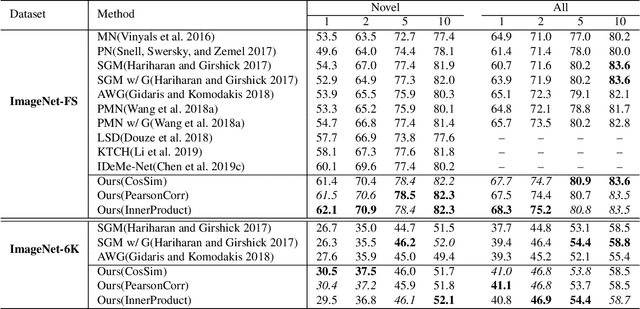
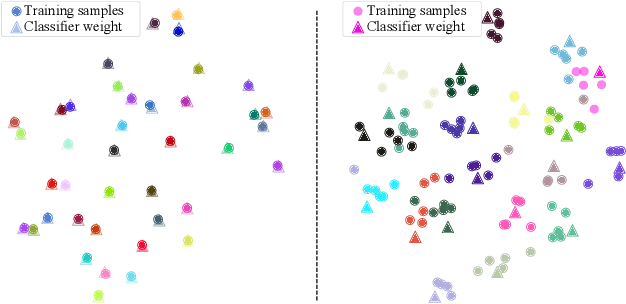

Abstract:Few-shot learning aims to learn novel categories from very few samples given some base categories with sufficient training samples. The main challenge of this task is the novel categories are prone to dominated by color, texture, shape of the object or background context (namely specificity), which are distinct for the given few training samples but not common for the corresponding categories (see Figure 1). Fortunately, we find that transferring information of the correlated based categories can help learn the novel concepts and thus avoid the novel concept being dominated by the specificity. Besides, incorporating semantic correlations among different categories can effectively regularize this information transfer. In this work, we represent the semantic correlations in the form of structured knowledge graph and integrate this graph into deep neural networks to promote few-shot learning by a novel Knowledge Graph Transfer Network (KGTN). Specifically, by initializing each node with the classifier weight of the corresponding category, a propagation mechanism is learned to adaptively propagate node message through the graph to explore node interaction and transfer classifier information of the base categories to those of the novel ones. Extensive experiments on the ImageNet dataset show significant performance improvement compared with current leading competitors. Furthermore, we construct an ImageNet-6K dataset that covers larger scale categories, i.e, 6,000 categories, and experiments on this dataset further demonstrate the effectiveness of our proposed model.
Knowledge-Embedded Routing Network for Scene Graph Generation
Mar 08, 2019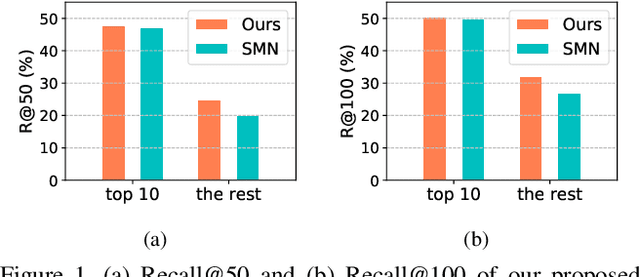

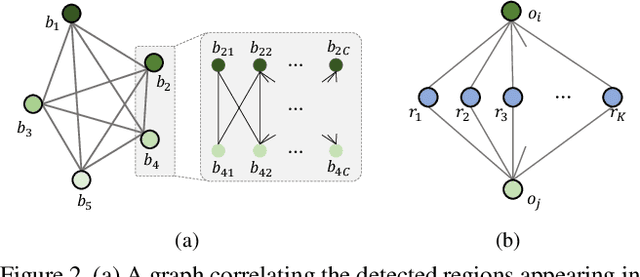
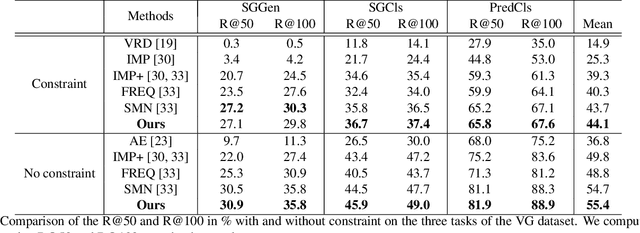
Abstract:To understand a scene in depth not only involves locating/recognizing individual objects, but also requires to infer the relationships and interactions among them. However, since the distribution of real-world relationships is seriously unbalanced, existing methods perform quite poorly for the less frequent relationships. In this work, we find that the statistical correlations between object pairs and their relationships can effectively regularize semantic space and make prediction less ambiguous, and thus well address the unbalanced distribution issue. To achieve this, we incorporate these statistical correlations into deep neural networks to facilitate scene graph generation by developing a Knowledge-Embedded Routing Network. More specifically, we show that the statistical correlations between objects appearing in images and their relationships, can be explicitly represented by a structured knowledge graph, and a routing mechanism is learned to propagate messages through the graph to explore their interactions. Extensive experiments on the large-scale Visual Genome dataset demonstrate the superiority of the proposed method over current state-of-the-art competitors.
Neural Task Planning with And-Or Graph Representations
Aug 25, 2018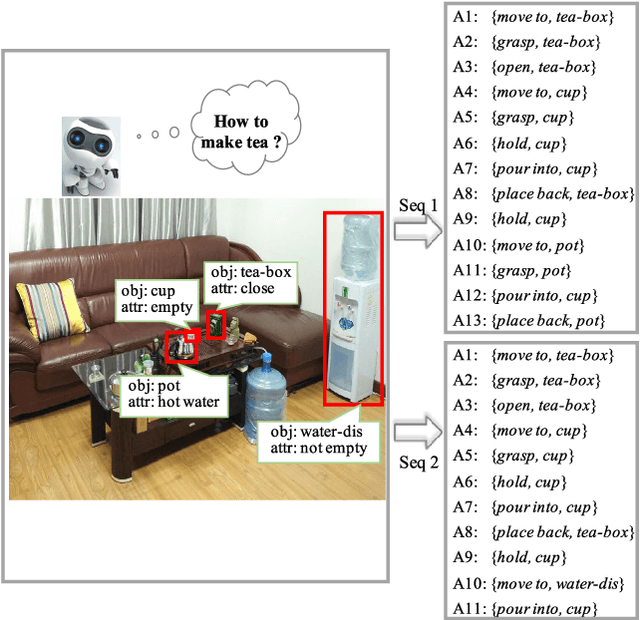
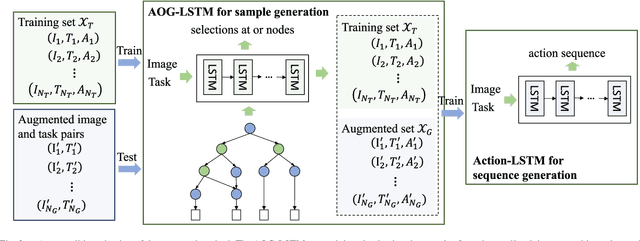

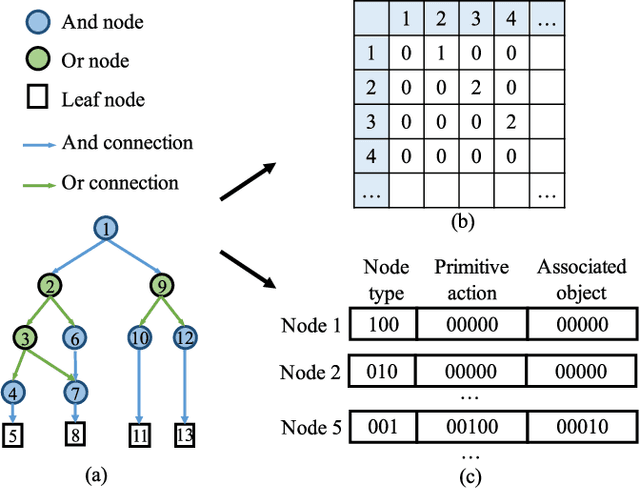
Abstract:This paper focuses on semantic task planning, i.e., predicting a sequence of actions toward accomplishing a specific task under a certain scene, which is a new problem in computer vision research. The primary challenges are how to model task-specific knowledge and how to integrate this knowledge into the learning procedure. In this work, we propose training a recurrent long short-term memory (LSTM) network to address this problem, i.e., taking a scene image (including pre-located objects) and the specified task as input and recurrently predicting action sequences. However, training such a network generally requires large numbers of annotated samples to cover the semantic space (e.g., diverse action decomposition and ordering). To overcome this issue, we introduce a knowledge and-or graph (AOG) for task description, which hierarchically represents a task as atomic actions. With this AOG representation, we can produce many valid samples (i.e., action sequences according to common sense) by training another auxiliary LSTM network with a small set of annotated samples. Furthermore, these generated samples (i.e., task-oriented action sequences) effectively facilitate training of the model for semantic task planning. In our experiments, we create a new dataset that contains diverse daily tasks and extensively evaluate the effectiveness of our approach.
Knowledge-Embedded Representation Learning for Fine-Grained Image Recognition
Jul 02, 2018



Abstract:Humans can naturally understand an image in depth with the aid of rich knowledge accumulated from daily lives or professions. For example, to achieve fine-grained image recognition (e.g., categorizing hundreds of subordinate categories of birds) usually requires a comprehensive visual concept organization including category labels and part-level attributes. In this work, we investigate how to unify rich professional knowledge with deep neural network architectures and propose a Knowledge-Embedded Representation Learning (KERL) framework for handling the problem of fine-grained image recognition. Specifically, we organize the rich visual concepts in the form of knowledge graph and employ a Gated Graph Neural Network to propagate node message through the graph for generating the knowledge representation. By introducing a novel gated mechanism, our KERL framework incorporates this knowledge representation into the discriminative image feature learning, i.e., implicitly associating the specific attributes with the feature maps. Compared with existing methods of fine-grained image classification, our KERL framework has several appealing properties: i) The embedded high-level knowledge enhances the feature representation, thus facilitating distinguishing the subtle differences among subordinate categories. ii) Our framework can learn feature maps with a meaningful configuration that the highlighted regions finely accord with the nodes (specific attributes) of the knowledge graph. Extensive experiments on the widely used Caltech-UCSD bird dataset demonstrate the superiority of our KERL framework over existing state-of-the-art methods.
 Add to Chrome
Add to Chrome Add to Firefox
Add to Firefox Add to Edge
Add to Edge